Final report for YENC16-105
Project Information
The goal of this project was to introduce urban youth to the concept of sustainable agriculture, something students had little to no knowledge about, through hands-on activities in a community garden. Instead of purchasing lumber to build raised garden beds and compost bins, heat treated pallets donated by the Habitat for Humanity ReStore were repurposed into raised garden beds. Students learned the benefits of not tilling the soil and how to sheet mulch with sustainable materials.
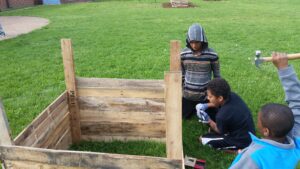
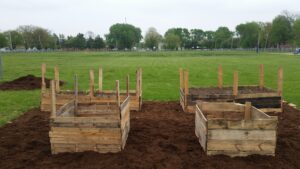
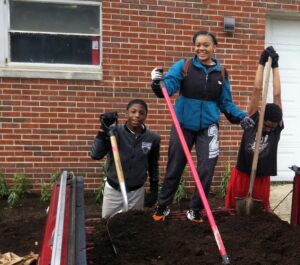
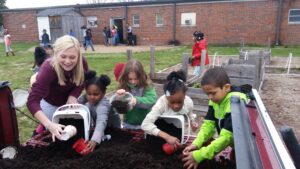
Students learned about starting seeds indoors, hardening off, transplanting, and direct seeding. Activities and lessons taught students about heirloom varieties and genetic diversity, companion planting, spacing needs, and succession planting. Students closely observed seed and plant growth, learned common names of plants and how to identify them. Students also learned about organic weed and pest management techniques. Students learned how to identify when crops were mature and the proper way to harvest. Produce from the garden was eaten raw or prepared in recipes during cooking and nutrition lessons and taken home on many occasions.
Students prepared foods such as chard, collards, corn, pumpkin, spinach, and tomatoes; herbs such as basil, sage, and parsley; and edible flowers such as borage, calendula, and nasturtium into recipes that they helped prepare. Some students were hesitant to try new foods, but admitted to enjoying the flavor after sampling. Many students exclaimed that they loved the new foods and begged for the recipe! Students mapped food stores in the community and found that their access to fresh produce increased once the garden was installed.
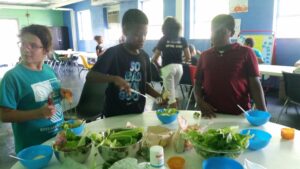
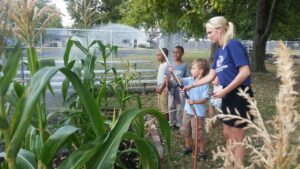
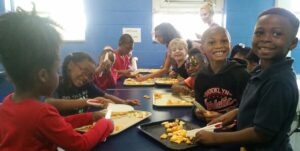
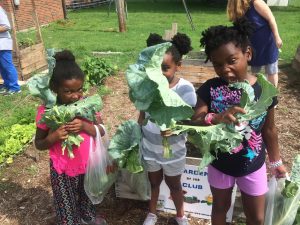
At the beginning of this project the majority of students were very uncomfortable around wildlife and would become unruly during an encounter. Some students would want to harm or kill insects and worms at first sight. Now, almost all students will quietly observe the interaction between insects and plants and gently handle worms. Students now have a better understanding of organic gardening methods and many can speak about why this practice is better for the environment and the choice for many consumers.
In addition to the outdoor growing space, the students now maintain an indoor aeroponic tower garden. Students are learning the differences between growing with and without soil and are able to eat more fresh produce during winter.
Through social media, newsletters, word of mouth, facility tours, and a clip on the nightly news, this project is well known and has great support from the community. This project made way for a successful collaboration with Lincoln Land Community College and plans for the future include a continuation of this partnership.
Increase student knowledge about sustainable agriculture and equip them with the skills to grow, harvest, and prepare a variety of foods.
Increase access to and consumption of fresh produce and willingness to try new foods and recipes.
Increase student knowledge about local farms and farmers operating near them, have a better understanding of the way a food system works, and understand why sustainable agriculture is good for them, their local community, and the environment.
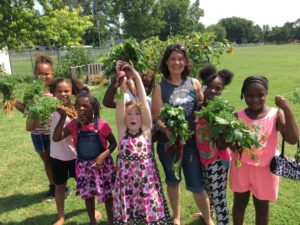
Cooperators
- (Educator)
- (Educator)
- (Educator)
- (Educator)
- (Educator)
- (Educator)
- (Educator)
- (Educator)
Educational & Outreach Activities
Participation Summary:
Students were introduced to and completed numerous activities using the following curricula/resources: Nourish, Seven Generations Ahead: Fresh From the Farm, Slow Food USA: Good, Clean, & Fair, Junior Master Gardener Handbook, LifeLab, American Heart Association, Georgia Organics, NRCS-USDA, Illinois Agriculture in the Classroom Ag Mags, SARE: Sustainable Agriculture Resources and Programs for K-12 Youth, MyPlate, The Food Project, Square Foot Gardening for Kids, and Chipotle: GROW. Topics covered included: tool safety and building garden boxes, no-till farming, sheet mulching, direct seeding and transplanting, plant spacing, harvesting, crop rotation, cover crops, beneficial insects and natural pest control, companion planting, healthy soils, water conservation, organic weed management, composting, plant structures, seasonal growing, season extension, local food systems and how they contribute to the health of a community and local economy, origins of foods, seed saving, value added products, careers in agriculture, food preparation skills, nutrition and exercise, and art made with organic materials.
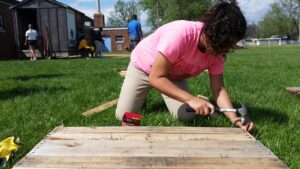

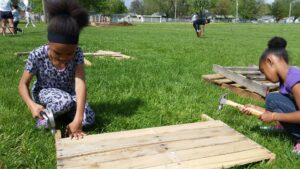

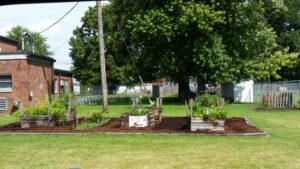
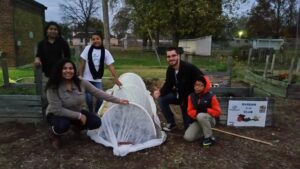
Photos of the Boys & Girls Club Community Garden project and information about available SARE grants and resources were shared through the Grow Springfield Facebook page and newsletter as well as a Slow Food Springfield newsletter. Highlights of the project were featured on the Boys & Girls Club Facebook page. Photos of the community garden and SARE grant information were shared on Facebook by the Grand Prairie Grain Guild, a 382 member group of plant breeders, farmers, millers, bakers and consumers who are interested in exploring the potential of local grain. The project also received media attention from Fox News Illinois.
At the Boys & Girls Club, K-2 students were visited by Charlyn Fargo, Hy-Vee Dietician, and learned more about incorporating fresh foods into meals and recommended portions of the different food groups. 3rd-5th grade students were visited by Amy Rebbe, U of I Extension Educator, and participated in a nutrition lesson focusing on the use of fresh herbs. Students helped prepare an herb dip and sampled the recipe when it was finished. Middle and high school students were visited by local farmer Sally Mc-Daniel Smith and listened to her speak about her farm operation and CSA model. Marnie Record, LLCC Workforce Specialist, visited middle and high school students and discussed career opportunities in agriculture and the local food system.
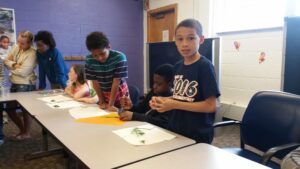
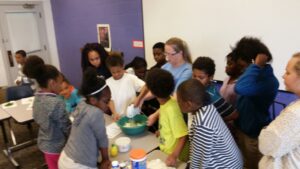
Students took field trips to local farms, Willow City and Harvest & Blooms. At Willow City Farm, students observed and learned more about chickens, turkeys, alpaca, horses, cows, and straw bale gardening. Students were treated to a pop up farm stand and given the choice of farm fresh chicken eggs or carrots to take home. At Harvest & Blooms, students learned more about the business of growing flowers, growing tomatoes, keeping honeybees, and seasonal foods in Illinois. They looked at an observation hive, sampled honey, tasted heirloom cherry tomatoes, and many took home cut flowers to share with family.
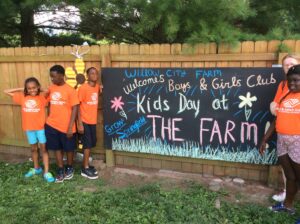
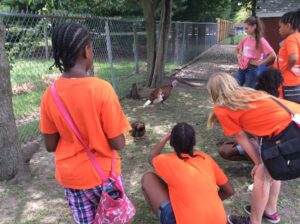
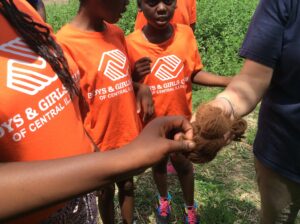
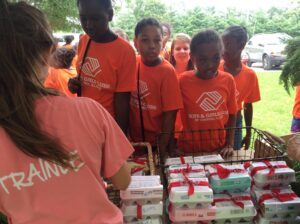
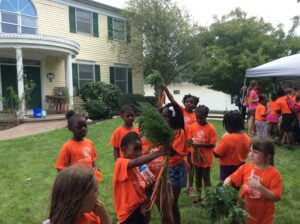
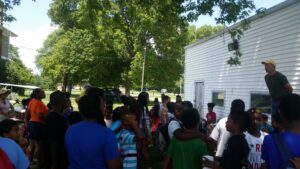
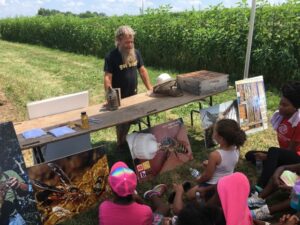
Learning Outcomes
Project Outcomes
At first, the Director of the Boys & Girls Club was hesitant about the project because other attempts at a community garden had been unsuccessful. After seeing the positive impacts of the current SARE Youth Educator Project on both students and staff, the director has offered whatever assistance necessary to keep the community garden program going.
When asked to write about the garden program, students gave the following responses:
"I really want this program to keep going because it makes me into a new and better person and I love it."
"I thought it would be really boring but when I got there I saw how very pretty it was with vegetables. I love garden club and I always will!"
"I was happy we grew green beans!"
"One day it was my first day of garden club and at first I was nervous. But when it was done I was happy!"
"Garden Club is so awesome and fun because we get to grow carrots!"
"I have been through many problems and this has helped me get through them. Mrs. Alana has helped me grow again."